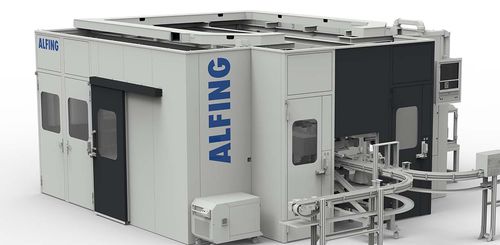More Than 25 Years of Experience in the Fracture Splitting/Cracking of Connecting Rods
In order to be able to assemble connecting rods and crankshafts, the “crank bore” of a connecting rod is separated during manufacturing. The separated components are then bolted together again. The separating of the “crank bore” is normally done with the inexpensive and extremely reliable procedure of “fracture splitting” or “cracking”.
During cracking, a stress riser is initially made with a laser at a defined position in the component. In the next step, a high amount of force is introduced into the work piece through a fracture mandrel. The break occurs exactly along the laser notch. The separated components do not have to be machined at the joint face, because the cracked surfaces guarantee a matching fit. The material must have sufficient brittleness in order to undergo cracking.
ALFING is a pioneer in the development of procedures and technologies for the fracture splitting of connecting rods. ALFING made this technology ready for large scale production in the beginning of the 90’s and it has been used throughout the world in ALFING machines. We are continually developing this process in close cooperation with our customers, because the demands for connecting rods are growing and thus, new shapes and new materials are being used. A particular challenge is the cracking of “tough” steel materials. When separating hardened or very tough substances, the pieces are cooled with nitrogen before cracking. The very tough substances become brittle through the cooling and are therefore able to be cracked.





